height TOYOTA SEQUOIA 2011 2.G Owners Manual
[x] Cancel search | Manufacturer: TOYOTA, Model Year: 2011, Model line: SEQUOIA, Model: TOYOTA SEQUOIA 2011 2.GPages: 688, PDF Size: 14.76 MB
Page 20 of 688
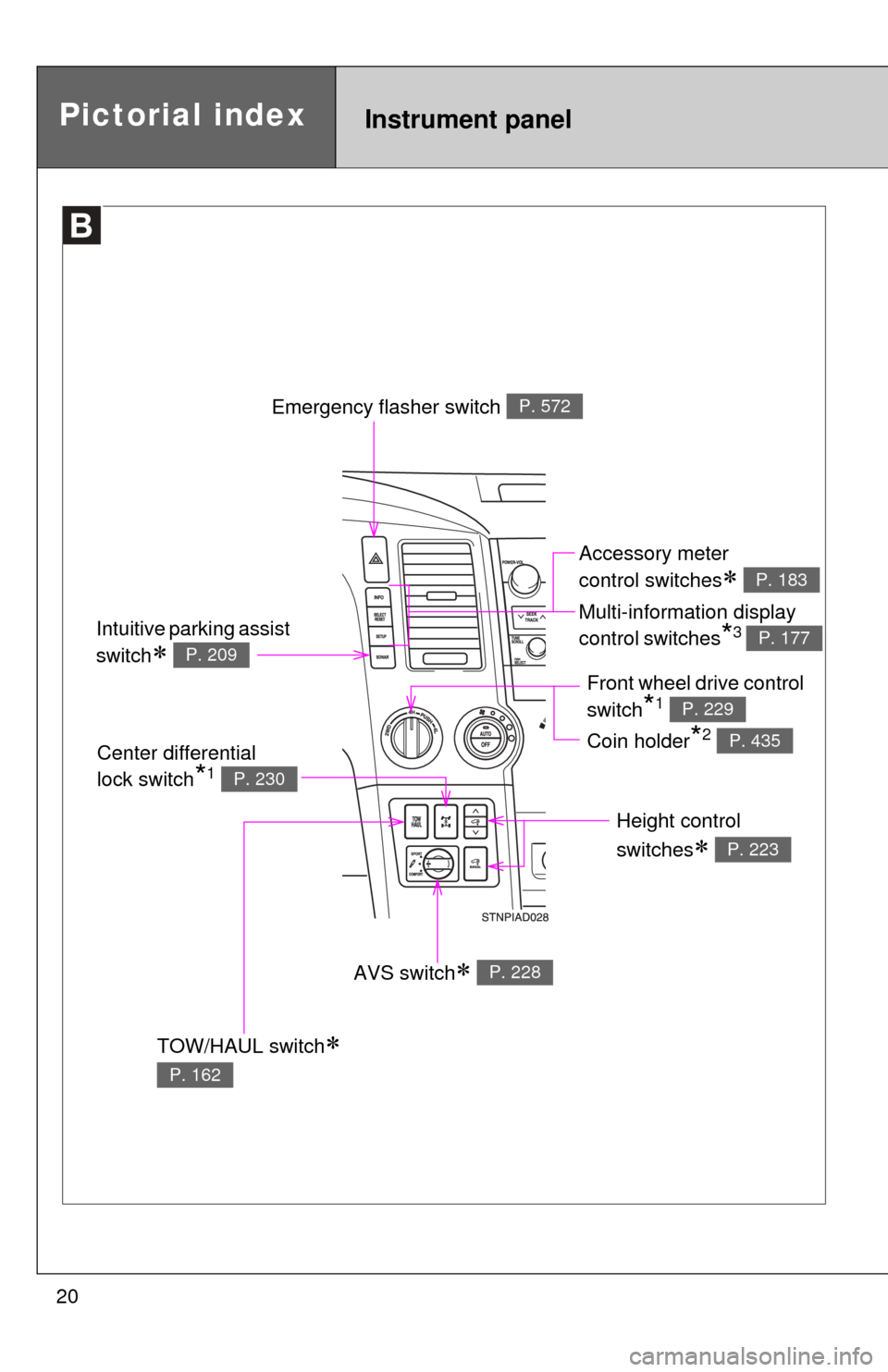
20
Pictorial indexInstrument panel
Emergency flasher switch P. 572
TOW/HAUL switch
P. 162
Height control
switches
P. 223
AVS switch P. 228
Center differential
lock switch
*1 P. 230
Accessory meter
control switches
Multi-information display
control switches
*3
P. 183
P. 177Intuitive parking assist
switch
P. 209
Front wheel drive control
switch
*1
Coin holder
*2
P. 229
P. 435
Page 50 of 688
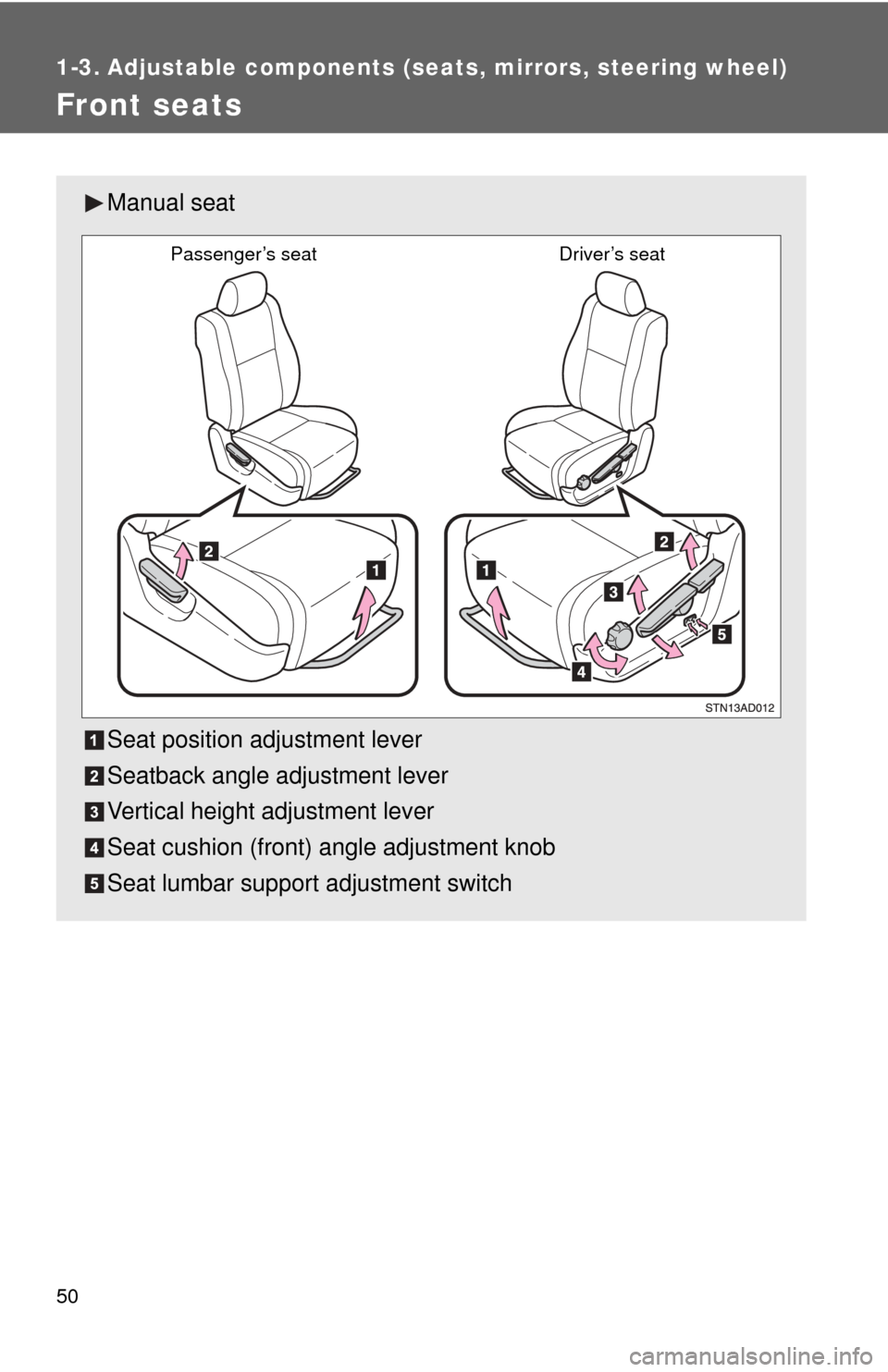
50
1-3. Adjustable components (seats, mirrors, steering wheel)
Front seats
Manual seat
Seat position adjustment lever
Seatback angle adjustment lever
Vertical height adjustment lever
Seat cushion (front) angle adjustment knob
Seat lumbar support adjustment switch
Passenger’s seatDriver’s seat
Page 51 of 688
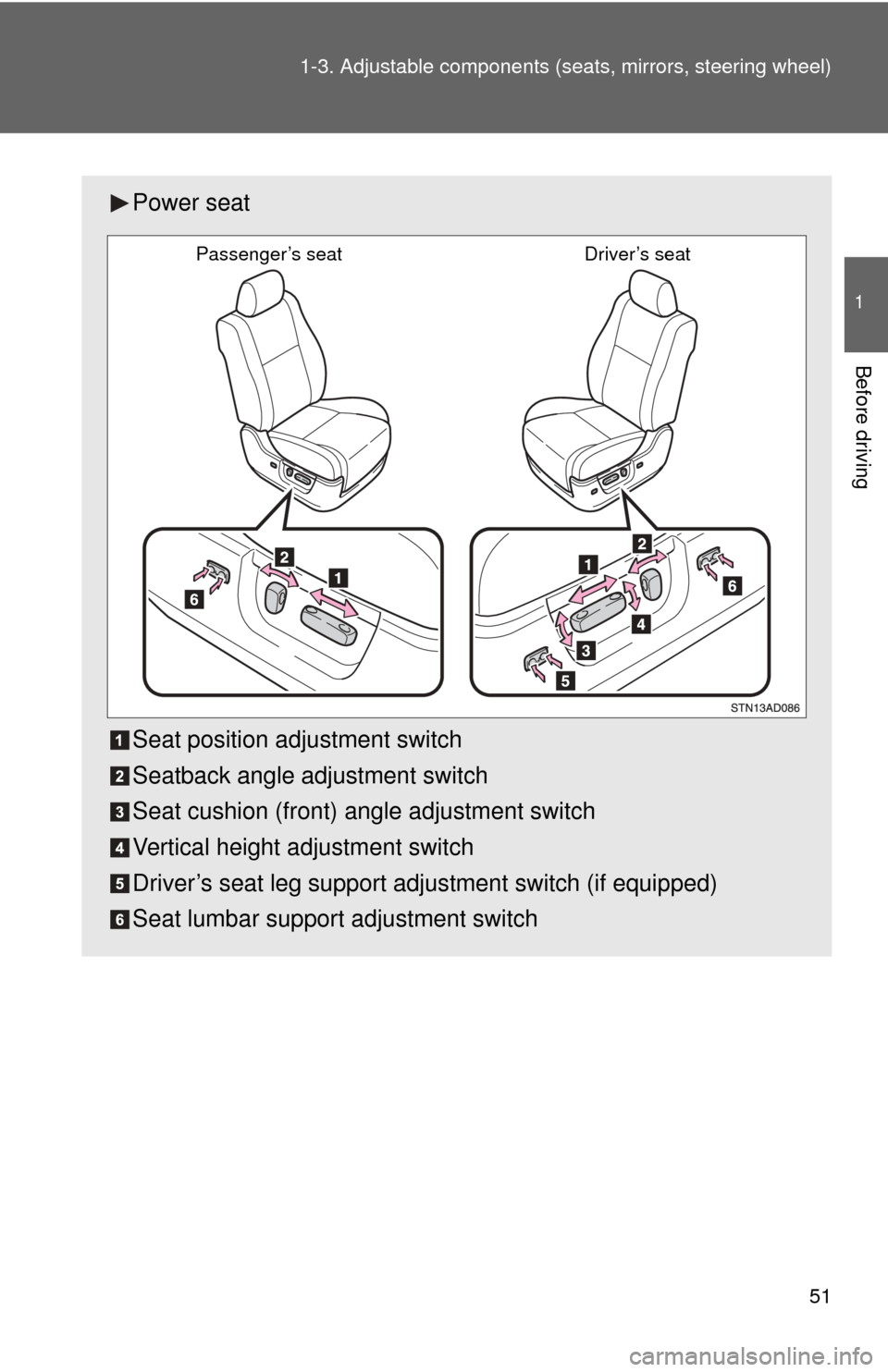
51
1-3. Adjustable components (s
eats, mirrors, steering wheel)
1
Before driving
Power seat
Seat position adjustment switch
Seatback angle adjustment switch
Seat cushion (front) angle adjustment switch
Vertical height adjustment switch
Driver’s seat leg support adjustment switch (if equipped)
Seat lumbar support adjustment switch
Passenger’s seat Driver’s seat
Page 69 of 688
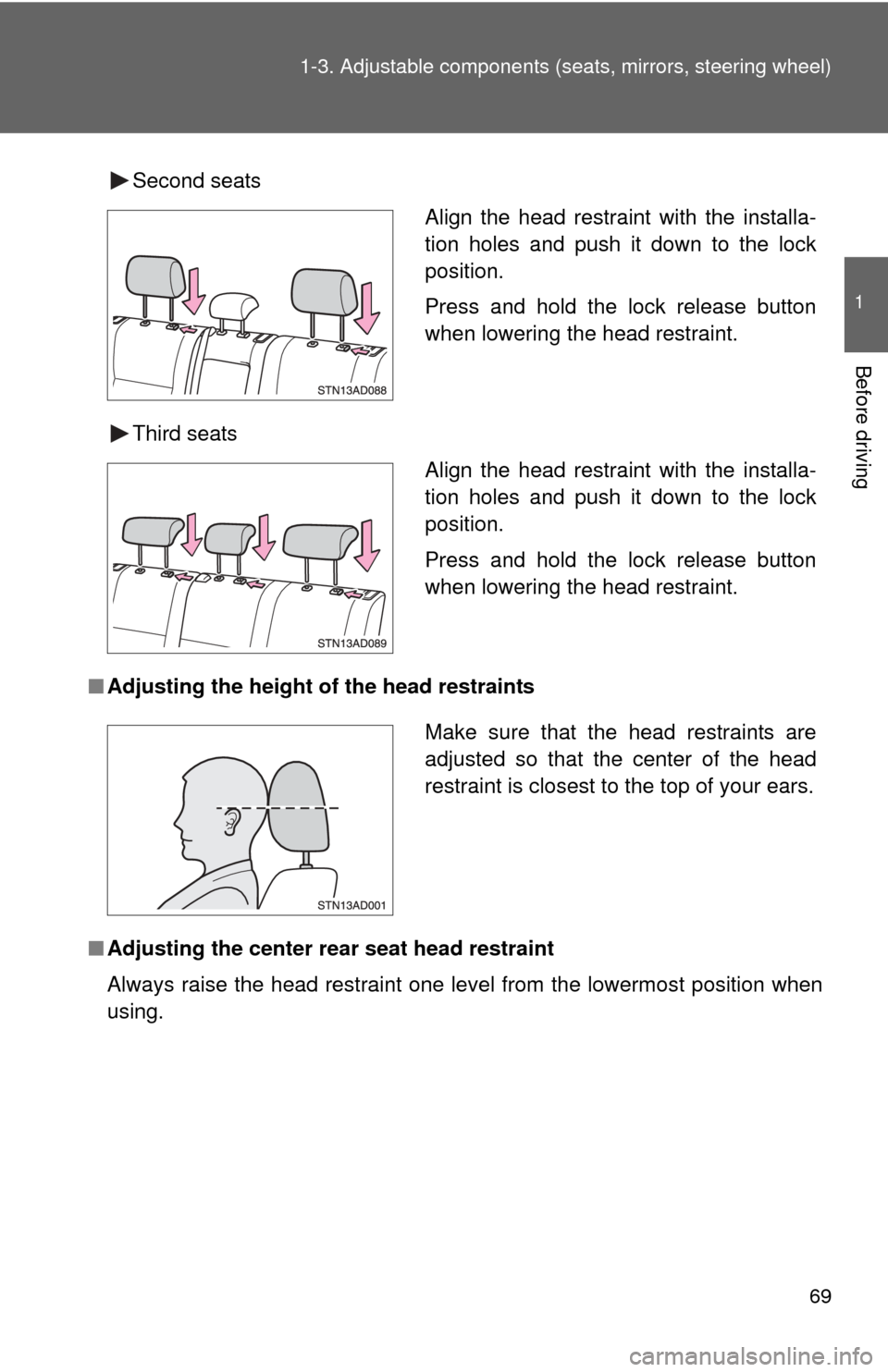
69
1-3. Adjustable components (s
eats, mirrors, steering wheel)
1
Before driving
Second seats
Third seats
■ Adjusting the height of the head restraints
■ Adjusting the center r ear seat head restraint
Always raise the head restraint one level from the lowermost position wh\
en
using.
Align the head restraint with the installa-
tion holes and push it down to the lock
position.
Press and hold the lock release button
when lowering the head restraint.
Align the head restraint with the installa-
tion holes and push it down to the lock
position.
Press and hold the lock release button
when lowering the head restraint.
Make sure that the head restraints are
adjusted so that the center of the head
restraint is closest to the top of your ears.
Page 72 of 688
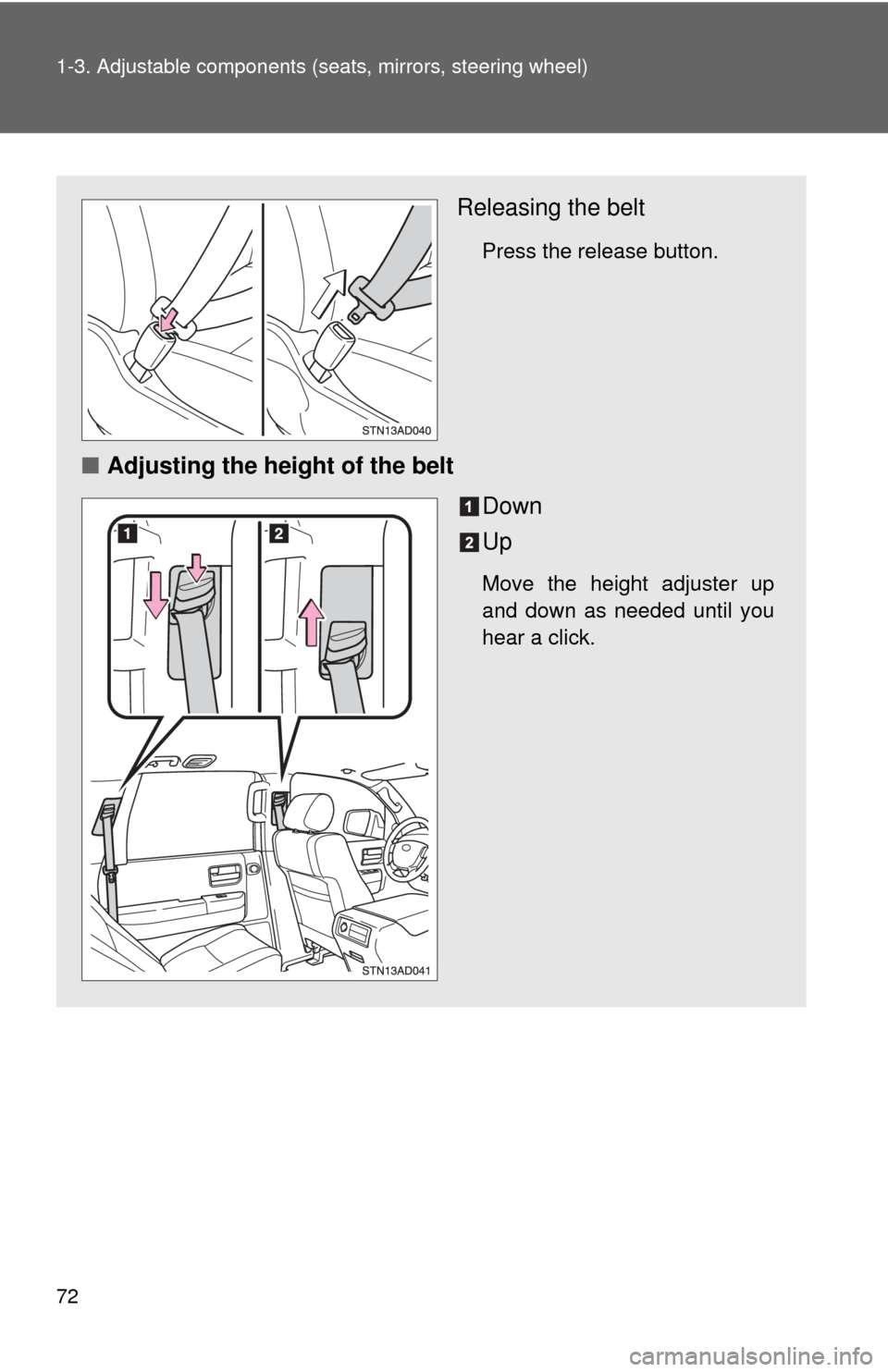
72 1-3. Adjustable components (seats, mirrors, steering wheel)
Releasing the belt
Press the release button.
■Adjusting the height of the belt
Down
Up
Move the height adjuster up
and down as needed until you
hear a click.
Page 84 of 688
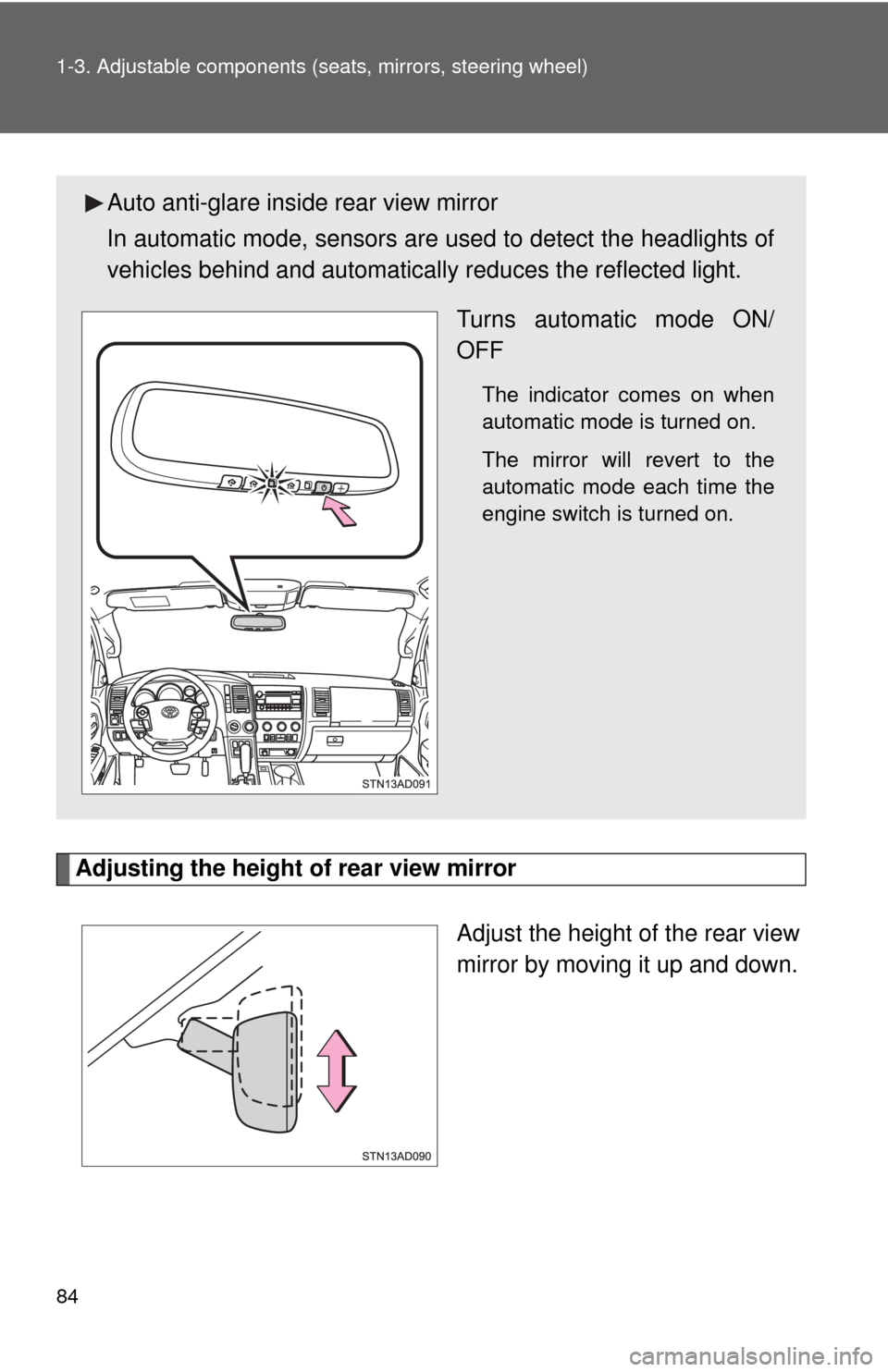
84 1-3. Adjustable components (seats, mirrors, steering wheel)
Adjusting the height of rear view mirror
Adjust the height of the rear view
mirror by moving it up and down.
Auto anti-glare inside rear view mirror
In automatic mode, sensors are used to detect the headlights of
vehicles behind and automatical ly reduces the reflected light.
Turns automatic mode ON/
OFF
The indicator comes on when
automatic mode is turned on.
The mirror will revert to the
automatic mode each time the
engine switch is turned on.
Page 151 of 688

151
2-1. Driving procedures
2
When driving
CAUTION
■
When driving the vehicle
●Do not shift the shift lever to N while the vehicle is moving.
Doing so may cause the engine brake to not operate properly and lead to
an accident.
● Do not turn the engine off while driving.
The power steering and brake booster systems will not operate properly if
the engine is not running.
● Use engine braking (downshift) to maintain a safe speed when driving
down a steep hill.
Using the brakes continuously may cause the brakes to overheat and lose
effectiveness. ( P. 160)
● When stopped on an inclined surface, use the brake pedal and parking
brake to prevent the vehicle from rolling backward or forward and causing
an accident.
● Do not adjust the position of the steering wheel, the seat, or the inside or
outside rear view mirrors while driving.
Doing so may result in a loss of vehicle control that can cause accidents
that may result in death or serious injury.
● Always check that all passengers’ arms, heads or other parts of their bod-
ies are not outside the vehicle, as this may result in death or serious injury.
● Do not drive in excess of the speed limit. Even if the legal speed limit per-
mits it, do not drive over 85 mph (140 km/h) unless your vehicle has high-
speed capability tires. Driving over 85 mph (140 km/h) may result in tire
failure, loss of control and possible injury. Be sure to consult a tire dealer
to determine whether the tires on your vehicle are high-speed capability
tires or not before driving at such speeds.
● If you drive through deep water over about 20 in. (500 mm) in depth, put
the vehicle height in the HI mode using the height control switch and then
change to manual mode by pushing the height control mode select switch.
Drive your vehicle at 18 mph (30 km/h) or less. Do not drive through water
deeper than about 28 in. (700 mm) even if the vehicle height is in “HI”
mode.
Page 174 of 688
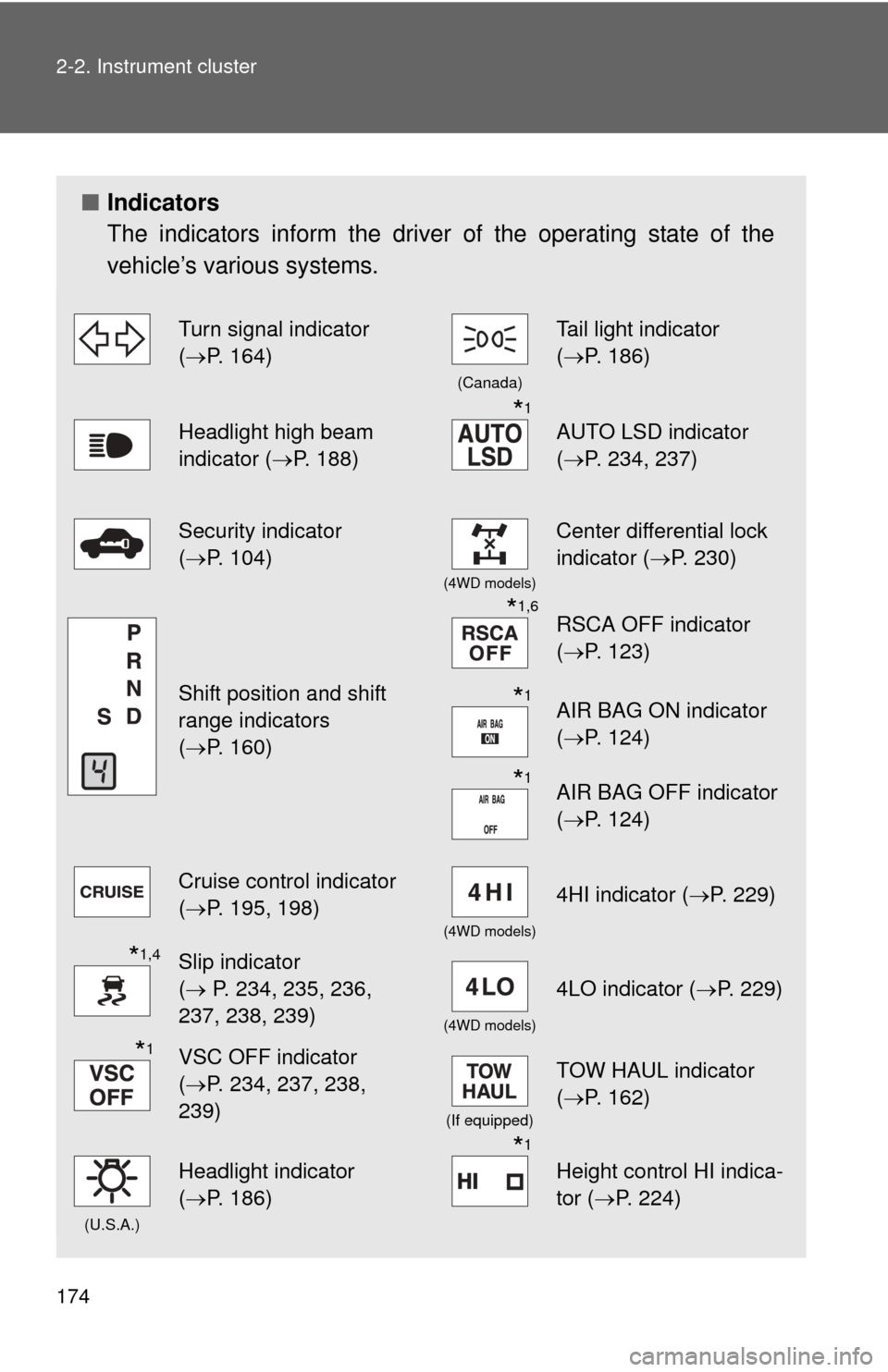
174 2-2. Instrument cluster
■Indicators
The indicators inform the driver of the operating state of the
vehicle’s various systems.
Turn signal indicator
(P. 164)
(Canada)
Tail light indicator
( P. 186)
Headlight high beam
indicator ( P. 188)*1
AUTO LSD indicator
(P. 234, 237)
Security indicator
(P. 104)
(4WD models)
Center differential lock
indicator ( P. 230)
Shift position and shift
range indicators
(P. 160)
*1,6RSCA OFF indicator
( P. 123)
*1AIR BAG ON indicator
(P. 124)
*1AIR BAG OFF indicator
(P. 124)
Cruise control indicator
(P. 195, 198)
(4WD models)
4HI indicator ( P. 229)
*1,4Slip indicator
( P. 234, 235, 236,
237, 238, 239)
(4WD models)
4LO indicator ( P. 229)
*1VSC OFF indicator
(P. 234, 237, 238,
239)
(If equipped)
TOW HAUL indicator
( P. 162)
(U.S.A.)
Headlight indicator
(P. 186)*1
Height control HI indica-
tor (P. 224)
Page 175 of 688

175
2-2. Instrument cluster
2
When driving
■
Warning lights
Warning lights inform the driver of malfunctions in any of the
vehicle’s systems. ( P. 583)
*1: These lights turn on when the engine switch is turned to the ON
position to indicate that a system check is being performed. They
will turn off after the engine is started, or after a few seconds. There
may be a malfunction in a system if a light does not come on, or if
the lights do not turn off. Have the vehicle inspected by your Toyota
dealer for details.
*2: Vehicles with multi-information display
*3: Vehicles without multi-information display
*4: The indicator flashes to indicate that the system is operating.
*5: The indicator comes on to indicate a malfunction.
*6: For 2WD models, even though there is no function of deactivatingthe curtain shield airbags in a vehicle rollover, the RSCA OFF indi-
cator turns on briefly when the engine switch is turned to the ON
position. But this is not a malfunction.
*7: The indicator flashes to indicate a malfunction.
*1Height control N indi-
cator (P. 224)*1Height control LO indi-
cator (P. 224)
*1Height control MAN.
indicator ( P. 224)
(Canada)(U.S.A.)(Canada)(U.S.A.)
(U.S.A.)
(Flashing)
*2*1*1*1*1*1*1*1
*1*3*3*1,7*1
*1,5*1
Page 223 of 688
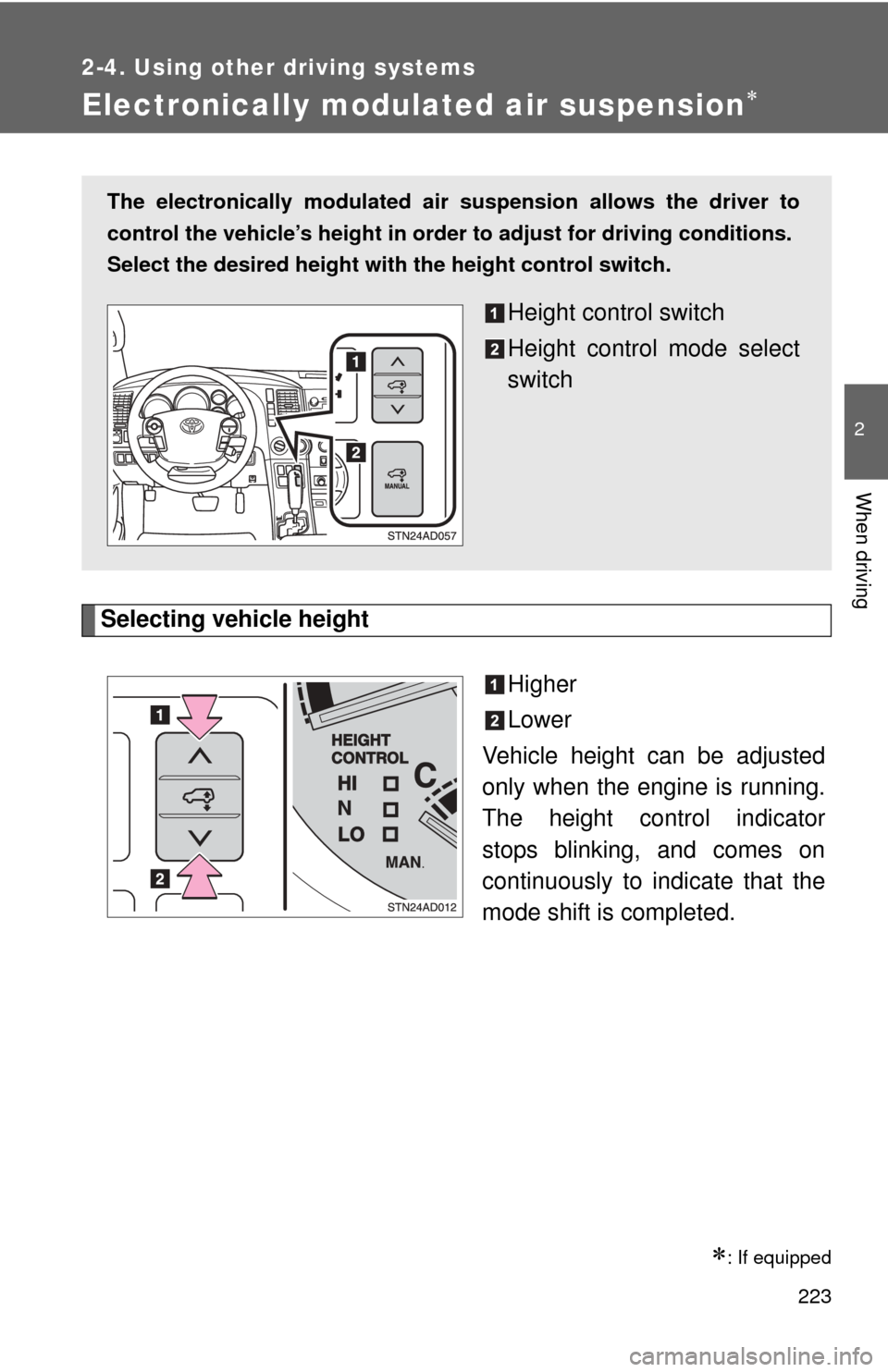
223
2-4. Using other driving systems
2
When driving
Electronically modulated air suspension
Selecting vehicle heightHigher
Lower
Vehicle height can be adjusted
only when the engine is running.
The height control indicator
stops blinking, and comes on
continuously to in dicate that the
mode shift is completed.
: If equipped
The electronically modulated air suspension allows the driver to
control the vehicle’s height in orde r to adjust for driving conditions.
Select the desired height with the height control switch.
Height control switch
Height control mode select
switch